- Home
- Frank Delaney
Ireland
Ireland Read online
Ireland
A NOVEL
Frank Delaney
Ed Victor gave me the gift of writing this book and thus the opportunity to rediscover my own beloved country; he initiated the novel, waited for, guided, and guarded it. For that and for myriad other reasons, it is dedicated to him with great affection and gratitude.
Contents
MAP
BEGIN READING
AUTHOR’S NOTE
ABOUT THE AUTHOR
PRAISE
COPYRIGHT
ABOUT THE PUBLISHER
MAP
Begin Reading
Wonderfully, it was the boy who saw him first. He glanced out of his bedroom window, then looked again and harder—and dared to hope. No, it was not a trick of the light; a tall figure in a ragged black coat and a ruined old hat was walking down the darkening hillside; and he was heading toward the house.
The stranger’s face was chalk-white with exhaustion, and he stumbled on the rough ground, his hands held out before him like a sleepwalker’s. He looked like a scarecrow deserting his post. High grasses soaked his cracked boots and drenched his coat hems. A mist like a silver veil floated above the ground, broke at his knees, and reassembled itself in his wake. In this twilight fog, mysterious shapes appeared and dematerialized, so that the pale walker was never sure he had seen merely the branches of trees or the arms of mythic dancers come to greet him. Closer in, the dark shadows of the tree trunks twisted into harsh and threatening faces.
Across the fields he saw the yellow glow of lamplight in the window of a house, and he raised his eyes to the sky in some kind of thanks. With no fog on high, the early stars glinted like grains of salt. He became aware of cattle nearby, not yet taken indoors in this mild winter. Many lay curled on the grass where they chewed the cud. As he passed, one or two lurched to their feet in alarm and lumbered off.
And in the house ahead, the boy, nine years old and blond as hay, raced downstairs, calling wildly to his father.
The stranger’s bones hurt, and his lungs ached almost beyond endurance. Hunger intensified his troubles; he’d eaten one meal in three days. The calm light in the window ahead pulled him forward in hope. If he held their attention, he might get bed and board for a week—and maybe more. In the days of the High King at Tara, a storyteller stayed seven days and seven nights. Did they know that? Nobody knew anything anymore.
With luck, though, the child in this house would help. Children want stories, and the parents might stretch their hospitality, fired by the delight in the boy’s eyes. Unlike last night’s billet; high up on a hill farm, he had slept in a loft above the cows, where the east wind got at his bones. The ignorant people there, who had no use for stories, gave him no food and closed their fireside to him. It happened more and more.
But this house would surely prove better; and it was, after all, Halloween, the great time of the year for telling stories, the time of All Souls’, when the dead had permission to rise from their graves and prowl the land.
Over the last few hundred yards the fog dispersed into flitters and wisps. At the house, a small white gate opened from the lane into a country garden, which in summer would shine with bunched roses and morning glories and tresses of sweet pea. The tall man in the black coat rapped twice on a brass knocker. Immediately, the husband of the house opened the door.
“Aha!”
The stranger and the householder exchanged a solid handshake, eye to eye. Behind his father, the boy waited in the hallway, jigging from foot to foot.
“God save all here,” said the stranger; he hunched his shoulders nervously.
Over the years, his voice had grown deep and rotund. His manner and speech had an unusual formality, with trace elements of stately English from an earlier century and a hint of classical learning. Consequently, his language rang generally more colorful than the speech of the people he met every day.
The man of the house smiled and stood aside.
“Come in. You brought clear skies to us.”
“With your permission, I’ll bring clear thoughts too.”
“Your coat is wet—let me take it.”
The man extended a cold, bony hand to the boy peeking around his father’s waist.
“A fine boy. God save you too, ma’am!” called the Storyteller to the woman of the house.
She looked irked, and he guessed that he, this stringy, unwashed man, with skin like canvas, would disrupt her rigorous household; nonetheless she set a place for him while her husband, pleased and comfortable, poured the visitor a drink.
The boy watched the stranger attacking the food like a tired hound. He sensed that the man’s hunger fought with the man’s decorum. Nobody spoke because the newcomer seemed too famished to be interrupted. The boy examined the man’s face, saw the long, thin scar, wondered if he had been in a knife fight, perhaps with a sailor on some foreign quayside.
And the sodden boots—in his mind he saw the stranger fording streams, climbing out of gullies, traversing slopes of limestone shale on his endless travels across the country. Did he have a dog? Seemingly not, which was a pity, since a dog could have sat guard by the fire at night. Did the man ever sleep in caves? They said that bears and wolves had long been extinct in Ireland—but had they?
That evening, in that white house among the fields, a boy’s most passionate dream came true. His father had long talked of the traveling storytellers. He said they possessed brilliant powers; they brought the long-gone past to life vividly, without what he called “the interference of scholars. Those professors,” he said. “They dry out history in order to put it down on paper.” In his father’s view, a tale with the feeling taken out of it had “no blood and was worth very little.”
But the old stories, told by traveling storytellers round the fireside on winter evenings—they came hurtling straight down the long, shiny pipeline of the centuries, and the characters, all love and hate and fire, “tumbled out on our own stone floor.” So said his father. “They’re still among us. I wouldn’t be surprised if one of them came here one day. He’ll probably be tall and old, with boots and a hat, and he’ll enchant us all.” And now such a storyteller had finally arrived.
He was the last of his breed. Figures like him had trudged the countryside for twenty-five centuries, telling the story of Ireland in one form or another. In the old days, they were beloved; a visit from one often gave a village its brightest moment of the year.
They had counterparts all over the globe—India, South America, China. Such travelers wandered into a village, spread a rug under a shady tree, and began a daylong tale of the country’s old times. They called up dragons and fire and mountains and maidens and gods. Wary villagers who drifted forward to hear what was being said always stayed to the end. Whatever the topic, the audience knew they could be assured of vitality and drama—great events told in bright colors with huge spirit. Thus the traveling storyteller and his oral tradition shaped much of the world’s culture and character.
The Storyteller tongued the last crumbs from behind his teeth. He moved to a chair by the fire, where he prepared to smoke a pipe. From a yellow oilcloth pouch he offered a fill of tarry, black tobacco to the husband, who thanked him and said he didn’t smoke. The stranger filled his pipe, picked up the iron tongs, plucked a tiny ember from the fire, and planked it on top of the pipe. After much sucking and tapping, the tobacco glowed, and blue smoke drifted forward in search of the chimney.
He leaned back in his chair. The boy had settled directly opposite him, on the cushions of a long wooden bench beside the hearth. With teeth tall and yellow like a horse’s, the Storyteller smiled at the boy, who still gazed huge-eyed at this sorcerous creature.
“D’you know what an architect is?”
The boy looked at his fath
er for approval before he answered.
“A man who causes buildings?”
“And d’you know where Newgrange is?”
“Up in county Meath?”
“Sure enough. May we ask on the banks of what river?”
The boy glanced again at his adored father.
“Isn’t it the Boyne?”
At a noise from outside, the Storyteller swung his head hopefully. The door heaved open; a man and woman ambled in with two daughters, aged about twelve and eight. One was blond and one red-haired, and they wore flowered pinafores. The younger girl was directed to join the boy on the high bench by the fire, where she sat watching the Storyteller with wonderland eyes.
A coal fell forward on the hearth. The Storyteller sucked vigorously on his pipe, and it made a little dottle of noise. Next moment, the audience increased again—another couple strolled in from across the lane with their young daughter.
Word had obviously spread. Perhaps someone among the farms had earlier seen the tall stranger’s descent through the misty fields and guessed who or what he was. So he would have an audience tonight. Whether he would have one tomorrow night—or a venue—would depend on him.
“What would you like in your whiskey?” asked the host.
One neighbor said, “More,” and they all laughed.
After some minutes of talk and smiles, everyone settled down. No electricity in the houses in those days; an oil lamp in the window and another with a glass sconce on the wall laid gilded shadows into the room. The firelight played on the Storyteller’s long face. He jiggled his pipe, eased back in his chair, spread his shoulders, and began.
EVERY WORTHWHILE STORY BEGINS WITH THE immortal words, “Once upon a time.” Never did a phrase ring so true as it will this evening. I have come to this hospitable and decent house to continue my life’s work, to do what I do every night of the year. And that is, to tell the story of Ireland.
The tale I shall render you this evening concerns the most brilliant Irishman of all time. He was the architect of Newgrange—but, as all stories should, this one begins before its own beginning. And that was a long, long time ago, before there was ever a place called Newgrange, before there was ever an architect to build its famous work, even before there was a country called Ireland.
So: once upon a time, the ground upon which we walk was no more than a lump of stone down at the center of the earth. It was part of the thick shell containing that furnace that rages down there night and day. And that thick shell was always kept cool by the oceans that covered it. But in the early days of our planet, the shell was weak in places. The flames burst through again and again, and vast layers of rock were flung up into the seas.
This boiling volcanic surface spread over the prehistoric oceans. It split and re-formed into wide lands of nothing but black rock. And these split and re-formed and cooled and split again until, two thousand, five hundred million years ago, there were five continents. These continents became all the countries of the world.
And so, every land on this planet is the child of ocean and rock, water and stone. Every day and every age since then, some rock or island somewhere crumbles and breaks off at the edge of some landmass.
Many of those fragments still retain the shapes of the countries and continents to which they were once joined. On the maps of my schooldays, some of them look like couples who have gone to sleep close to each other and then floated gently apart in the night. Tomorrow, take out your atlas and look at Ireland and Britain. Together, they look like a child curled up asleep near a larger child, who is then curled up in the lee of the parent continent, Europe. That’s how our own country and our most important neighbor began life—as stone born of fire and cooled by sea.
Some of that ancient rock is with us still. I can take you to a place far down on the east coast where you can see and touch it. Near Wexford there’s a stone, which, the locals will tell you, dates to two million years B.C. Two hundred miles higher up the coastline, as the crow flies, there’s another such rock, in Antrim. I’ve looked closely at these two items, and I could see the specks of quartz sparkling inside them. They looked like the eyes of little creatures who saw the mighty flames that imprisoned them in the rock long, long ago.
So the fact is, when the volcanic earth had mostly stopped heaving, Ireland amounted to nothing more than a cold field of stone. Much, much later, sediment from the universe floated over and settled on this stone acreage and spread and thickened there like a primal silt.
Gradually, gradually, across those hard plains, there rose an island of rich loam and gentle hills, where today quiet rivers flow through green woods down to seas full of glimmering fish, where shiny horses and their foals gallop across the meadows in a bountiful and misty land flowing with milk and honey. That’s how the world thinks of us today, and we’re glad of the compliment, which is accurate enough—but it isn’t the whole story. Before the land finally settled, before the final phase of seeds blew in on the wind and fertilized it, and before the birds and the insects again made their homes here, we were also born of another great earthly power—the direct opposite of fire. We were born of ice.
Four ice ages attacked Ireland, one after another, and the ice took possession of everything. It destroyed any fertility that had been established, ruined any progress that nature had made. Wherever it met rock, the ice’s freezing edges gleamed like the starched frills of folded cloth. It found hidden flaws in the mountains, ripped them open, and filled them—they’re what we call glaciers, and in time they became today’s rivers. In the largest rock faults, the ice cut channels wide enough to turn into eventual seas, and that’s how Ireland was cut away from Britain.
All the hills and highlands and all the ravines and hollows and gullies and gulches and every wrinkle and creek and punchbowl of the Ireland we know today was carved by the cruel hand of ice. They say that great ice takes hold slowly. It begins when the sun grows colder and the land bends under an endless chilling gale. The temperature sinks without mercy, and over the bald clay of the plains and valleys a deep rime forms, squeezing out all plant and animal life.
Across Ireland, one such pulverization followed another until the countryside became a carpet of impenetrable cold. That all happened in the accumulations of the first three ice ages. And then, just as things were thawing out once more, a last northern marauder settled Ireland’s final shape—the savage Fourth Ice Age.
Twelve thousand years ago, a vast sheet of compacted and frozen snow broke away from the Arctic Circle, which surrounds the North Pole. It was thousands of feet thick and hundreds of miles broad, and when it finally rode down the curve of the planet, it looked like a floating country.
They say that ice on the move sounds like the beginning of the world. With shouts louder than the voice of God, its shelves heave and crack. The intensity of its light alters every color it meets. Ice, they tell me, is never pure white, never a fixed or lone shade. It is ivory, it is silver, it is chalk, it is salt.
Except that—according to the polar explorers, and I’ve met more than one of them in my own travels—ice isn’t white. Close up, it handles as white. At certain distances, it stands as white. But those who know it well, who have stood on it, lain on it, even fallen through it—they say that ice in bulk glows blue.
Does it take its cue from the sky, as the sea does? Or is it a trick of the light? Maybe it has struck a pose to show how chilly it is, how menacing? Perhaps the blue is clothing, cladding, a gift of nature—as we know, she has all the best tricks. Whatever the cause, the ice that broke away and sailed down those high Atlantic latitudes twelve thousand years ago was as blue as a lady’s gown.
But it had other colors too. Do you know the names of the noble metals? Gold, silver, and platinum. All ice shines like those noble metals, and all color, as we know, is determined by where the light falls. As this island of ice moved south, I wonder how many shades of gold the sun sparked from it. Yellow and bronze and copper. Amber and brass and saffron. And
then, at night, under the wind-whipped moon, thousands of new shades glinted, mostly silver, soft or piercing or ominous or benign.
So there it was, sinister in its bright lights and content in its own power. Its noble metals flashed. The sound of its great creakings and crackings echoed across the waters. And the whole glimmering mass headed relentlessly down the northern seas like some great, glowing ocean liner built for a nation of giants.
It was the biggest iceberg ever seen, a thousand times bigger than the one that sank the Titanic. It was its own landscape and its own geography. The fierce weather of the north had polished it like glass. And the harsh winds of the east had ruffled it and etched little furrows on the plated surfaces. These shales looked like ruched fabric or ebbing sands, and the whole mass had hogbacks and crests and headlands and forelands, all sharp-edged, jagged, and crystal.
The bow of this great vessel formed itself into a fierce and concentrated spearhead. It slammed forward in slabs and reefs so wide that the very horizon seemed made of ice. And it attacked Ireland with spikes half a mile high and half a mile wide.
The first white prow crashed into the cliffs of our northernmost counties, Antrim, Derry, and Donegal. Huge chunks of foreland fell away into the ocean and formed today’s bays and harbors. Higher wedges of ice scythed out deeper inlets—you can gaze up at those cliffs today and some of them look as if a great hand descended with a sharp knife and cut a sheer slice from the rock.
After it came ashore, this great iceberg plunged south across the country. It kicked rocks and even hills out of its path, and it scooped out valleys and glens that had never existed before. A few peaks and ridges were higher than the ice-cliff, and they continued to raise their spears above the ice. You know them; mountains like Errigal in Donegal, Galtymore in Tipperary, Croagh Patrick in Mayo, where pilgrims after the Ice Age climbed to be nearer their gods, and do so to this very day. But along the lower slopes and in the deep valleys and ravines, the ice fought every fold and won every groove. A new cold gripped the mountains so tightly that its chill penetrated to the stone’s deepest core.

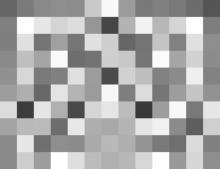 Tipperary: A Novel of Ireland
Tipperary: A Novel of Ireland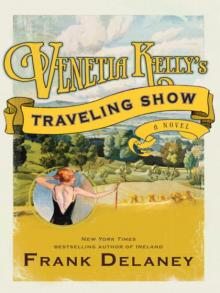 Venetia Kelly's Traveling Show: A Novel of Ireland
Venetia Kelly's Traveling Show: A Novel of Ireland The Matchmaker of Kenmare
The Matchmaker of Kenmare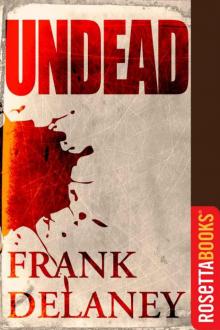 Undead (Kindle Single)
Undead (Kindle Single)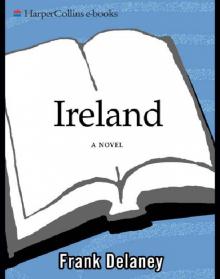 Ireland
Ireland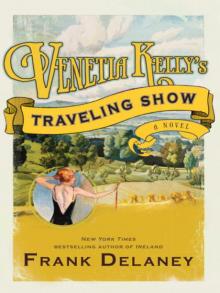 Venetia Kelly's Traveling Show
Venetia Kelly's Traveling Show Tipperary
Tipperary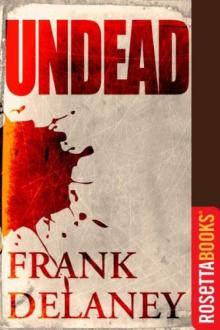 Undead
Undead